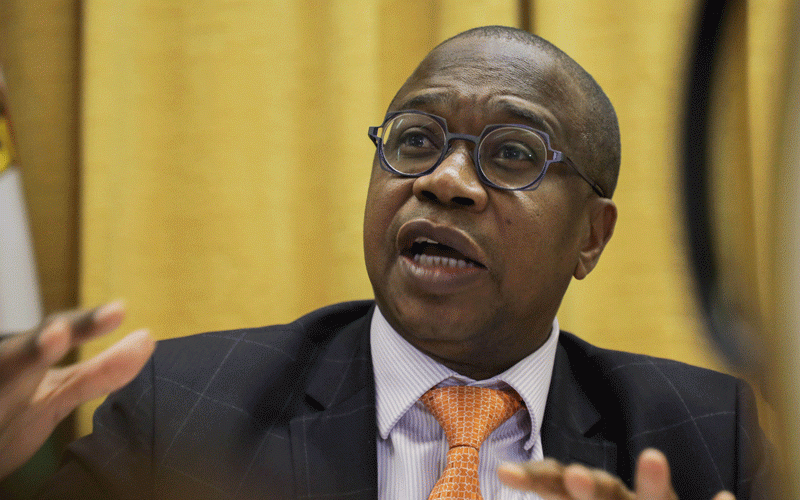
IT has been less than six months after authorities calmed inflation and the parallel market rate’s depreciation and all has become undone in the past couple of weeks.
The ZWL has lost 50% of its value since the beginning of the year after it doubled from 1 000 to 2 000 per USD while YoY inflation clocked 484% in February 2023, according to John Hopkins Applied Economics professor Steve Hanke.
Some retailers have begun pricing and selling goods strictly in USD despite stern warnings by the government and the Finance and Economic Development minister Mthuli Ncube have hinted to a return to a bank policy rate of 200%.
These developments have warranted us to go back to the drawing board and re-assess the economic outlook of the country in 2023.
At the beginning of the year, we published an economic outlook series for Zimbabwe, and we projected that:
The bank policy rate would gradually decline to 100% by December 2023,
The parallel market rate would end the year at c.ZWL$2,500 to the USD, and
YoY inflation would simmer to 102% by December 2023.
- ‘Inflation could shoot to 700% by April next year’
- New perspectives: Inflation control critical for economic growth
- Inflation spike: Why interest rates aren’t the answer
- Village Rhapsody: Govt must ensure that devolution works
Keep Reading
We observe that, in the last four months, the bank policy rate has declined to 140%, the parallel market rate has surged to ZW$2 000 per USD, and ZWL inflation has surged significantly as proxied by the dramatic increase in the ZWL price of goods.
According to our ballpark estimates, YoY ZWL inflation topped 427% in April 2023.
We are cognisant of the fact the 2023 is an election year and we assert that there will be concerted efforts to stabilise macroeconomic fundamentals at least until the presidential election take place. To that end, we outline several measures that could be put in place in the coming months below.
Interest rate hikes
The surge in inflation in recent months will likely prompt a response by monetary policy-makers through an increase in interest rates back to 200%.
We observe that when interest rates were increased to a level consistent with the Taylor rule in 2022, there was a marked slowdown in the MoM inflation which receded from 30,7% in June 2022 to 2,4% in December 2022.
We opine that the Reserve Bank of Zimbabwe could revert to a contractionary monetary policy in an effort to contain ZWL inflation in the same manner as last year.
While a more appropriate rate would be well above 200%, the need to strike a balance between containing inflation and the affordability of debt capital will likely result in sub-inflationary revisions of the policy rates.
Crackdown on parallel market
We observe that the recent spikes in the depreciation of the parallel market rates coincides with bulk payments done by the government to service providers, and this has attracted the central bank’s close eye on the expenditure of these ZWL funds.
However, we think that this could extend to other players in the economy who typically transact large sums of ZWL that could shake the parallel market rate in the case that they are used to purchase currency in the informal market.
We add that there might be a “Name and Shame” campaign as a further deterrent to market players that are also protective of their brand equity.
Propped demand for ZWL
We opine that the authorities will continue to support the local currency — ergo slow the depreciation on the currency — by providing incentives to transact in ZWL on payments such as statutory obligations.
The anticipated rollout of digitised gold coins could complement efforts to contain the depreciation if these tokens are also quoted in the ZWL like the gold coins.
Opaque ZWL inflation
The central government recently scrapped the conventional inflation calculation method and introduced a blended inflation statistic, which significantly dials down the actual CPI growth in ZWL.
The use of blended inflation marks the country’s divorce from the globally accepted modified Laspeyres method of calculating inflation and undermines the credibility and confidence of official inflation figures.
However, blended inflation will likely remain in the picture because it presents an image of successful efforts to contain inflation.
Despite all the above, achieving macroeconomic stability will be very difficult given that these measures are typically effective in a highly formalised economy.
Zimbabwe’s economy, on the other hand, is extensively informalised and this limits the reach of any monetary and fiscal policy. As such, we expect market forces to outweigh corrections initiated by the expected policy changes.
To this end, we proffer the following worst-case scenario:
December ZWL YoY inflation will likely breach 2 000% come year end,
The bank policy rate will likely end the year between 150% and 200%, and
The parallel market rate could depreciate as far as ZW$9 000 by December 2023.
The negative sentiment on the economy’s outlook has already seeped into the stock market and we note that the ZSE is currently operating with significant price weakness as many investors diversify their investments basket beyond stocks.
The sustained sell-off on VFEX stocks suggests that demand for the USD remains high and any inflows of USD are not being directed to the VFEX.
That said, there are pockets of opportunities to capture capital gains in the long-term on both markets. We identify ZSE-listed Delta Corporation and VFEX-listed Innscor Africa as top picks for long-term investors sitting on ZWL and USD cash piles.
- Mtutu is a research analyst at Morgan & Co. — [email protected] or +263 774 795 854.











